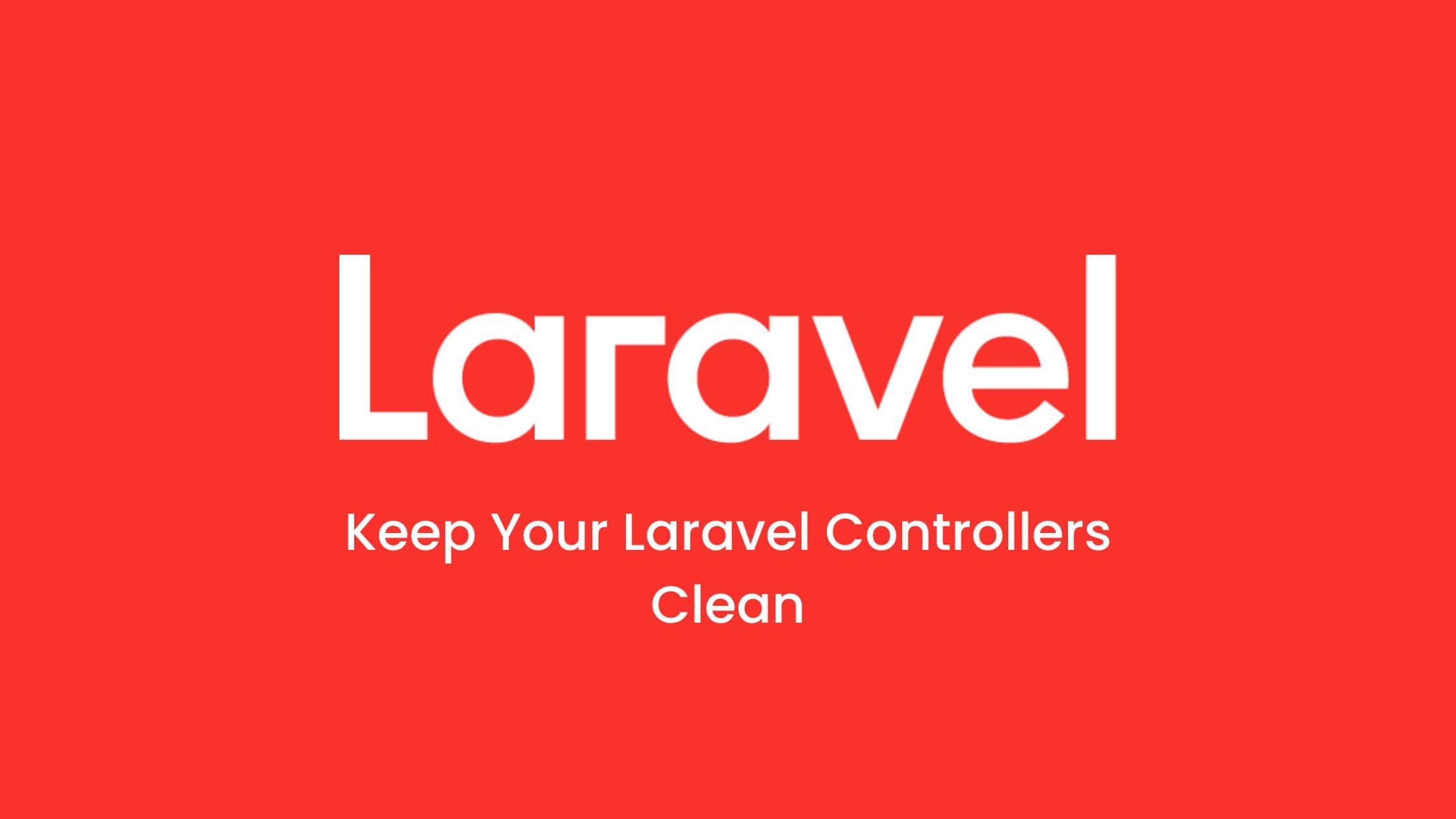Controllers sit at the heart of our Laravel applications. They manage all data received by the app, and all data sent out by the app. Because of this, controllers are often the first place you'll find bloating in a Laravel project. Reducing this technical debt is essential. In doing so you'll make your controllers more readable, more testable and more modular.
In this article, we will break down our 5 top methodologies for keeping our controllers clean and reducing the noise.
Understanding Laravel Controllers
Role of Controllers
Laravel controllers are an essential part of the framework. They act as the intermediary between the user and the application's logic. Controllers receive requests from the user and then interact with the model to retrieve the necessary data. Once the data is obtained, the controller passes it to the view, which then renders the response to the user.
In simple terms, controllers are responsible for handling user requests and returning the appropriate response. They are also responsible for managing the flow of data between the model and the view.
Structure of Controllers
Laravel controllers are typically defined in the app/Http/Controllers directory. They are commonly named after the resource they are responsible for managing. For example, a controller that manages user authentication would be named AuthController, and a Post might have a PostController.
Controllers are defined as classes that extend the App\Http\Controllers\Controller base class in your Laravel project. They contain methods that correspond to the various actions that can be performed on the resource. For example, a UserController might have methods for creating, updating, and deleting users.
Laravel provides several helper methods that can be used within controllers to perform common tasks such as retrieving input data, validating input, and returning responses. These methods can be accessed using the $this keyword within the controller class. Behind the scenes, these will often interact directly with the Laravel Request object.
Top 5 Tips to Keep Laravel Controllers Clean
Adhere to Single Responsibility Principle
The Single Responsibility Principle is a fundamental principle of software development that states that a class should have only one reason to change. If you've not heard of SRP, or want to learn more FreeCodeCamp have a great article on the princple.
In the context of Laravel controllers, this means that each controller should be responsible for only one set of related actions. For example, a UserController should handle all user-related actions such as login, registration, and profile
management.
By adhering to the Single Responsibility Principle, we can keep our controllers focused and easy to understand.
Use Resource Controllers
Laravel's resource controllers provide a simple and consistent way to handle CRUD operations. Using resource controllers have a few benefits:
- Reduces the amount of code in your Routes files
- Ensure consistent naming conventions in your controller method names
- Saves developer time by stubbing out entire controllers with one command
As per the documentation, this is how you generate a resource controller:
php artisan make:controller PhotoController --resource
Additionally, resource controllers follow RESTful conventions, making our code more organized and easier to maintain.
Leverage Route Model Binding
Route Model Binding is a powerful feature of Laravel that allows us to automatically dependency inject model instances into our controller methods.
Here are the benefits of using route model binding:
- Automatic user input validation against SQL injection
- Reduction in repetitive code in controllers
- Automated & simple integration with Laravel authentication using Policies
Here's a before/after example of how you might tidy up a controller with route model binding:
class PostController extends Controller
{
public function update(string $postId)
{
$post = Post::find($postId);
if (!$post) {
abort(404);
}
// ...
}
}
After...
class PostController extends Controller
{
// Behind the scenes, Laravel will automatically attempt
// to retrieve the Post object from the type of the
// argument passed to the update method, and the value
// of the `post` parameter in the URL parameter.
public function update(Post $post)
{
// ...
}
}
Imagine how many lines of code you could save when implemented in every controller method.
Implement Service Classes
Service classes are a great way to encapsulate complex business logic and keep our controllers clean and focused on handling HTTP requests. By implementing service classes, we can keep our controllers thin and easily testable.
Some might argue against this, but often it's a good idea to extract heavy business logic from controllers. The thinking behind this is
Your controllers should handle interactions with the request; validation, authorisation, authentication, response formatting. Your model should be responsible for internal business logic, like sending email and creating DB records.
Isolating your business logic has the added benefit of making your code more flexible and easily testable.
Optimize with Middleware
Middleware is a powerful feature of Laravel that allows us to modify incoming requests and outgoing responses. By utilising middleware, we can keep our controllers clean and focused on logic central to the user action.
A use case example for middleware like this might be formatting or mutating some data in a request that is commonly accessed by controllers.
By following these top 5 tips, we can keep our Laravel controllers clean, organized, and easy to maintain.
Conclusion
In this article, we have discussed the top 5 tips to keep Laravel controllers clean. By following these tips, we can ensure that our code is easy to read, maintain, and scale.
By following these tips, we can ensure that our Laravel controllers are clean, maintainable, and scalable. We hope that this article has been helpful to you and that you can apply these tips to your own projects.




No comments yet…